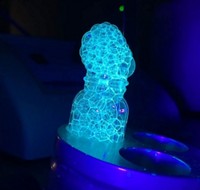Advertisement
Grab your lab coat. Let's get started
Welcome!
Welcome!
Create an account below to get 6 C&EN articles per month, receive newsletters and more - all free.
It seems this is your first time logging in online. Please enter the following information to continue.
As an ACS member you automatically get access to this site. All we need is few more details to create your reading experience.
Not you? Sign in with a different account.
Not you? Sign in with a different account.
ERROR 1
ERROR 1
ERROR 2
ERROR 2
ERROR 2
ERROR 2
ERROR 2
Password and Confirm password must match.
If you have an ACS member number, please enter it here so we can link this account to your membership. (optional)
ERROR 2
ACS values your privacy. By submitting your information, you are gaining access to C&EN and subscribing to our weekly newsletter. We use the information you provide to make your reading experience better, and we will never sell your data to third party members.

Real jellyfish are invertebrates, but these jelly dupes have a polymer backbone meant to store data. Tieze van den Elsen, a master’s student at Radboud University, made them by accident as part of his research in Hans Elemans’ molecular nanotechnology group. The project he’s working on focuses on encoding data to polymers using chiral building blocks. Each enantiomer of the isocyanate monomer represents a digit—either zero or one. The researchers’ goal is to string them together in such a way that the final polymer would contain information in binary code. To purify the polymers, van den Elsen dissolves them in a small amount of chloroform and then pours the solution into methanol. Since the polymers are not soluble in methanol, they immediately precipitate—in this case, into tiny, yellow jellyfish-shaped blobs.
Credit: Hans Elemans and Tieze van den Elsen.
Do science. Take pictures. Win money. Enter our photo contest here.





Join the conversation
Contact the reporter
Submit a Letter to the Editor for publication
Engage with us on Twitter